Local Column
COLUMN
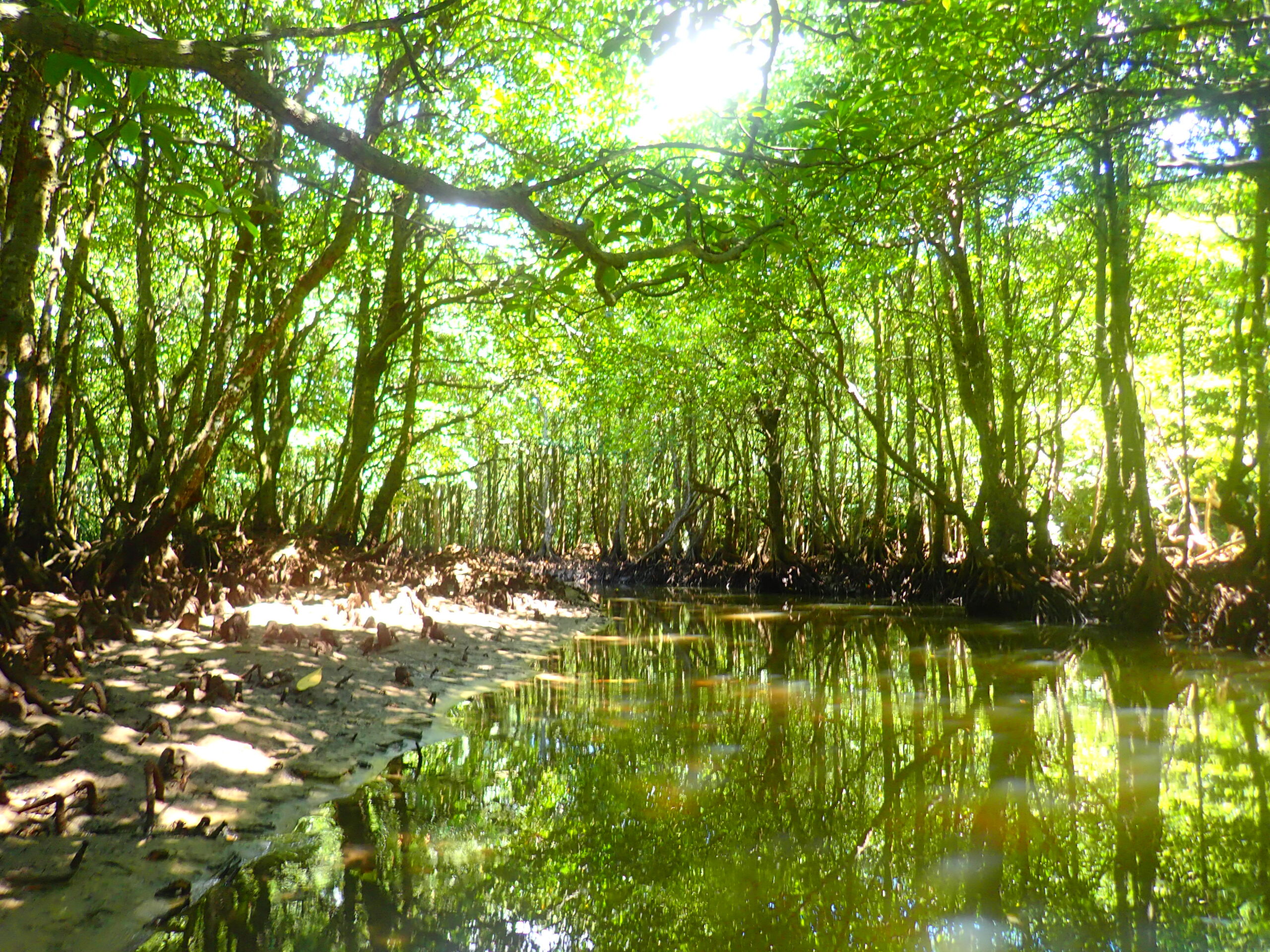
Overwhelming Nature! Plant observation in the jungle of Iriomote Island
目次
Plant observation in Iriomote Island, where 90% of the island is tropical rainforest!
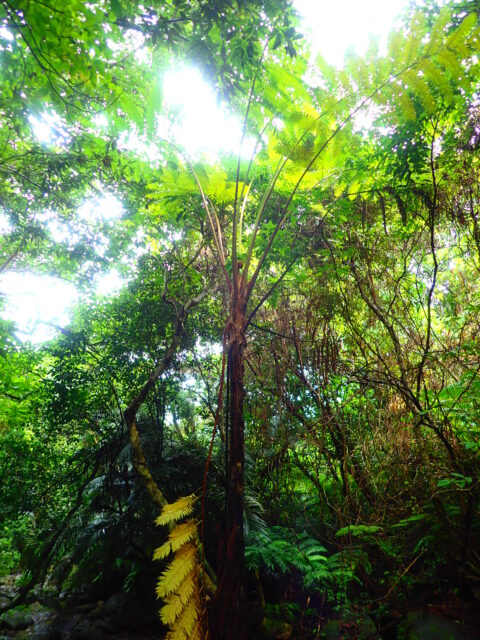
Have you ever wanted to be surrounded by tropical plants?
Whether you have ever thought about it or not, I recommend a botanical observation trip to Iriomote Island, an island filled with nature.
If you visit Iriomote Island for sightseeing, you will surely be captivated by the magnificent nature.
The natural environment of Iriomote Island, where 90% of the island is covered by tropical rain forest, is extremely precious not only in Japan but also in the world.
What kind of island is Iriomote Island?
Located approximately 440 km southwest of the main island of Okinawa, it is the second largest island in Okinawa Prefecture in terms of area after the main island.
Iriomote Island is loved by many people for its distinctive character and charm among the many remote islands in Okinawa.
Due to its location, Iriomote Island has a subtropical climate unlike the mainland.
Even in the middle of winter, the maximum temperature reaches 20°C on many days, and the mild climate is suitable for sightseeing in any season, as it is so mild that you can wear short sleeves throughout the year.
The population is about 2,400.
Because the community is not very large, there is no airport on the island, but you can fly to nearby Ishigaki Island, which can be reached by a single high-speed ferry, so access will not be difficult.
Designated as a World Heritage Site
Iriomote Island was recognized by UNESCO as a World Natural Heritage site.
Iriomote Island is famous for its mangroves! 3 mangroves that can often be seen
Let's take a look at the precious plants of Iriomote Island, which is considered a World Natural Heritage site.
First, let me introduce the mangroves that many of you may think of when you imagine the tropical rainforests of Iriomote Island.
Rhizophora mucronata (species of mangrove)
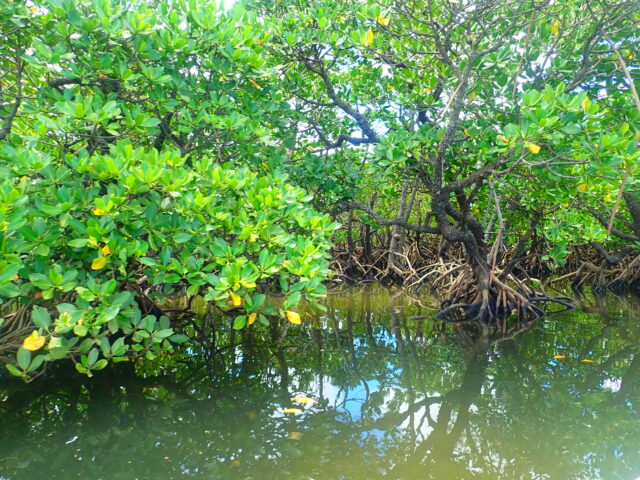
The Yaeyama Hirugi is often featured on television and in books as a representative mangrove.
This tree has the habit of growing into the water with its legs reaching out like an octopus and reaching a height of 10 meters, making it one of the tallest trees in the mangrove.
The tangled, intricate roots that extend their legs into the water are home to many living creatures and can be called trees that support the environment of Iriomote Island, both in name and in reality.
black mangrove (Bruguiera gymnorrhiza)
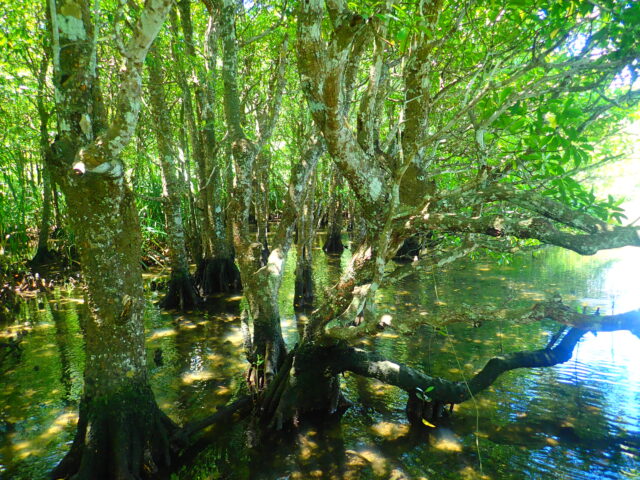
Ohirugi is also one of the tallest mangrove trees, growing to about the same height as Yaeyama Hirugi.
The calyxes that wrap the flowers in springtime are red and brightly colored, delighting our eyes.
One of the characteristics of this tree is its roots, which are shaped like an inverted V. If you see a tree that looks like this, you should look at its roots.
Kandelia obovata (species of mangrove)
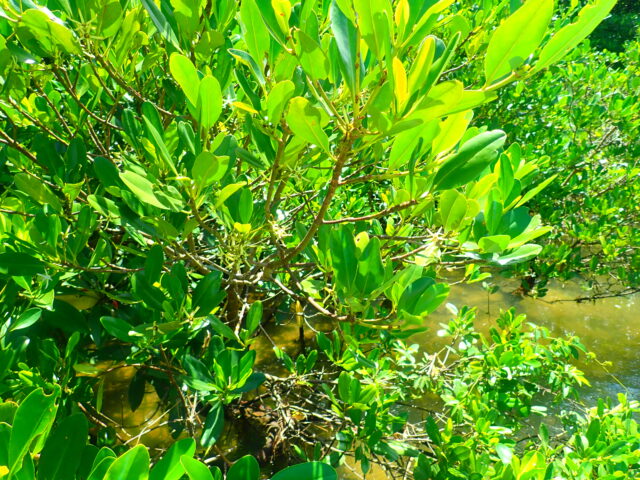
Mehirugi has a cold-tolerant characteristic as a mangrove, so it can be seen not only in Iriomote Island but also in many other places in Japan.
The 7 to 8 meter tall trees are lower than other mangroves, and their trunks have a slender appearance.
It is not a plant indigenous to Iriomote Island, but it is a unique way to enjoy Iriomote Island where you can compare it with other mangroves.
Enjoy SUP & canoeing while viewing the mangroves!

The activity of surfboarding or canoeing along the river where such mangroves are growing is very popular among many people in Iriomote Island.
Both stand-up paddle surfing (SUP) and canoeing are characterized by the ease with which they can be enjoyed by beginners, so why not take an active part?
10 other plants commonly found on Iriomote Island
Next, let's take a look at plants of Iriomote Island other than mangroves.
Because of the island's great natural beauty, there are a great many different types of plants.
Here we will introduce some of the most frequently seen and impressive plants.
sugarcane (Saccharum officinarum)
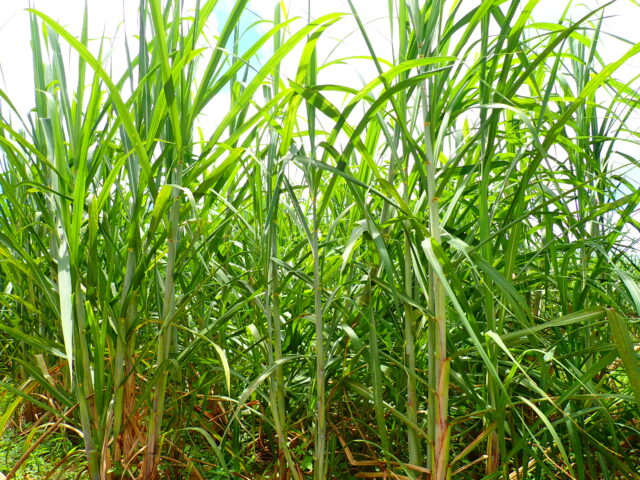
Many people may think of sugarcane, the raw material for sugar, when thinking of Okinawa's representative plant.
Sugarcane cultivation has been widely practiced on Iriomote Island since the late 1800s.
Driving along the island's roads in a rental car, you will see tall sugar cane fields rustling in the wind like the famous song.
island banana (var. of banana)
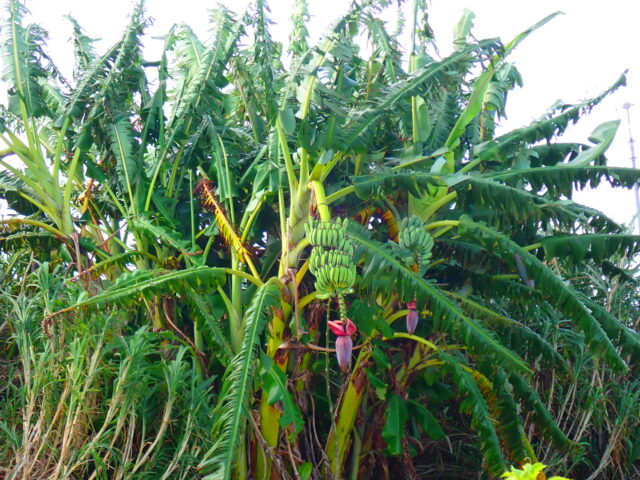
Banana cultivation is also thriving on Iriomote Island.
Bananas are called island bananas, which are different from the bananas that can be found in supermarkets and grocery stores, and have both rich sweetness and sourness.
With its refreshing tropical flavor, it is a high-end fruit that is traded at a price 10 times higher than that of the average banana.
Matsubara's red rockfish (Sebastes matsubarae)
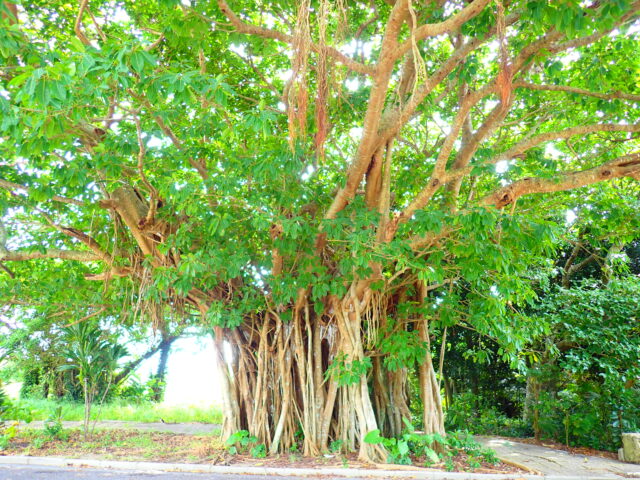
The akou is an evergreen plant that grows in low lands, with the tallest growing up to 20 meters.
Nicknamed the "strangler plant," it has the interesting property that when its seeds germinate on another plant, they take root and kill that plant.
The fig-like fruit can be used for food, and is a familiar plant that can be found here and there on Iriomote Island.
water yam (Dioscorea alata)
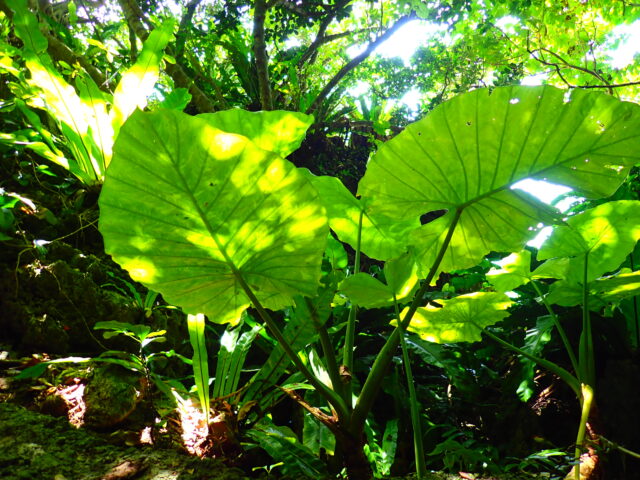
The kuzuimo, which is widely popular as an ornamental plant, can be seen everywhere on Iriomote Island, including along the sides of roads.
The large leaves, some up to 60 cm in length, are a distinctive feature, and the thick growth of kudzu potatoes gives the area a tropical atmosphere that differs from that of the mainland.
You can also see them with fruits and flowers that are not seen when they are grown in pots as houseplants, so if you have seen houseplant quacks, it is a good idea to compare them.
modama
Along the rivers of Iriomote Island, you may see trees that are shaped like ivy with intricate winding and undulating shapes.
This is a leguminous tree called modama, which is famous for producing giant beans with pods up to one meter long.
It is said to have served as the model for the fairy tale Jack and the Beanstalk, and even without detailed knowledge, just looking at its size is enough to enjoy this plant.
pandanus fruit
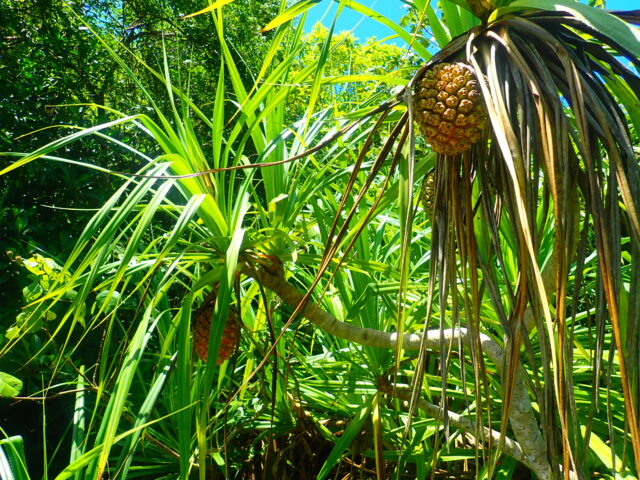
Many visitors to Iriomote Island say that the adan tree is the plant that left the greatest impression on them.
The thick, hard adan leaves can be processed to make Panama hats and other materials. The pineapple-like fruit has a distinctive appearance covered with a tough skin and is a favorite food of the coconut crab.
Furthermore, young shoots of adan are sometimes used as food, so it can be said that this plant is deeply rooted in the culture of Iriomote Island.
banyan tree
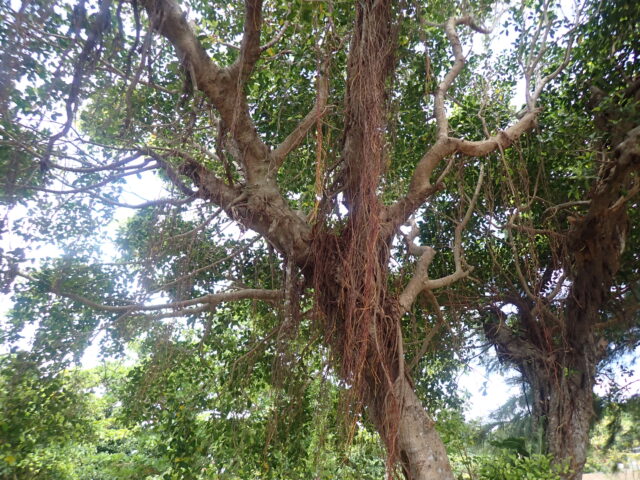
The banyan is a tall evergreen tree distributed in warm regions, and is often seen not only on Iriomote Island but also on trips to the remote islands of Okinawa and Kagoshima.
The lush jungle of Iriomote Island is dotted with large banyan trees, and you will surely be able to take a picture alongside them that is full of Okinawa's travel atmosphere.
It may also be interesting to note the roots of the banyan tree, as it has the same characteristics as the akou as a "strangler plant".
sicklepod (Senna obtusifolia)
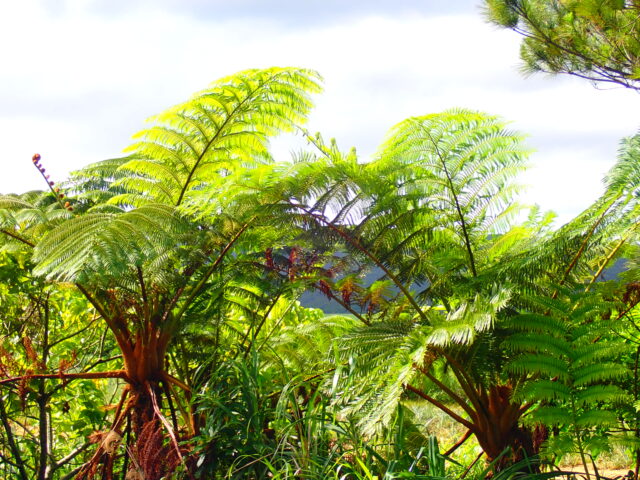
You can also encounter lizard's hego, which is considered the world's largest fern, on Iriomote Island.
While many of the ferns usually found on the mainland are not so large, this lizard's hego often grows into a giant tree of 10 meters or more.
The jungle-like atmosphere of the area, with huge, unfamiliar trees growing here and there, will make you feel as if you have stepped into an adventure movie.
Gilan elm (Ulmus davidiana var. japonica)
The "Giwan golden loquat" is a member of the loquat family, and is named "golden loquat" because it produces fruit similar to loquat but with an inferior taste.
The tree is characterized by the growth of fruits and flowers directly from the thick trunk, an unusual ecology known as trunk-grown flowers.
If you don't know it, it is easy to overlook it as an ordinary tree, but once you notice the fruits and flowers growing directly from the tree, it is very pretty.
Lonicera sempervirens
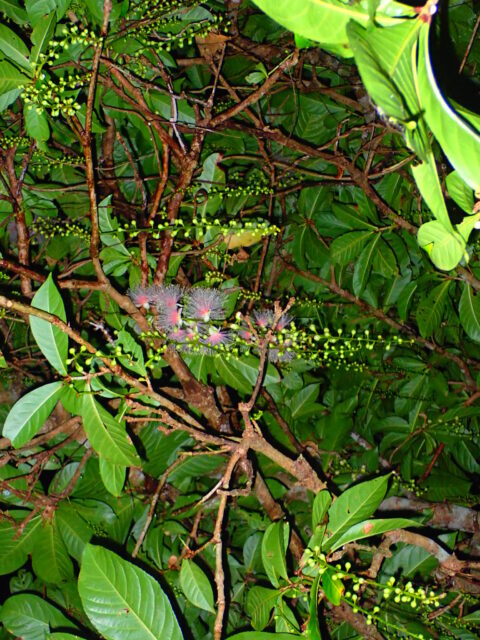
Lastly, I would like to introduce you to the sagaribana, the phantom flower.
These flowers are ephemeral in nature, blooming only during the night and morning hours during the summer and falling off in the morning.
Not only is it fragile, but its pure white petals are also very beautiful, and it is a flower loved by many people, from locals to tourists.
Jungle night tours for plant observation
The jungle night tour is the best way to take a closer look at the many plants of Iriomote Island.
Night tours are very popular on Iriomote Island, and some people even say that night is the realm of Iriomote Island rather than day.
There is a great possibility of encountering rare animals!
On night tours, visitors may encounter not only plants but also wildlife that are active at night.
Many of the animals in Iriomote Island are nocturnal, staying still in their dwellings during the day and moving at night.
If you would like to see animals in their natural habitat, please consider taking a night tour.
Sagaribana Tour for Sagaribana viewing
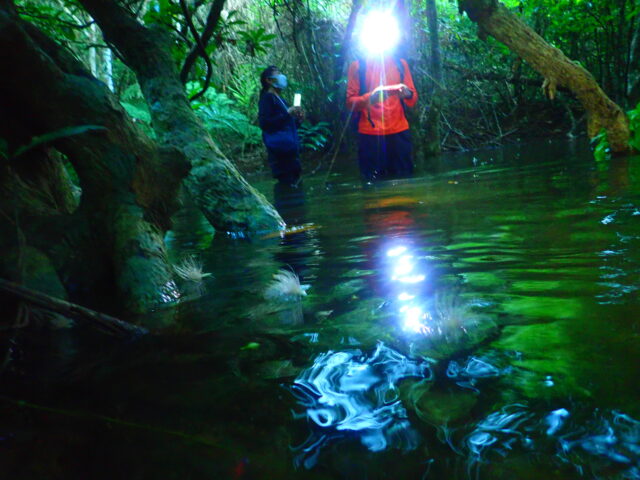
If you want to appreciate the sagaribana, take a sagaribana tour that will take you to places where sagaribana are in bloom.
It is not a plant that grows anywhere on the island, so if you want to be sure of seeing it, it is best to go to the dedicated trails.
Sagaribana is only available during limited season (May-August)
As a reminder, sagaribana is a seasonal flower.
As mentioned above, sagaribana blooms only during the summer months of May through August.
If you inadvertently visit Iriomote Island for the purpose of seeing sagaribana in other seasons, you will not be able to see it, so be sure to make your travel schedule according to the right time of year.
summary
We hope you enjoyed our introduction of the plants of Iriomote Island, which is overflowing with nature.
Even those who normally do not pay much attention to plants and flowers may become interested in plants once they visit Iriomote Island.
If you have a chance, please visit Iriomote Island!

